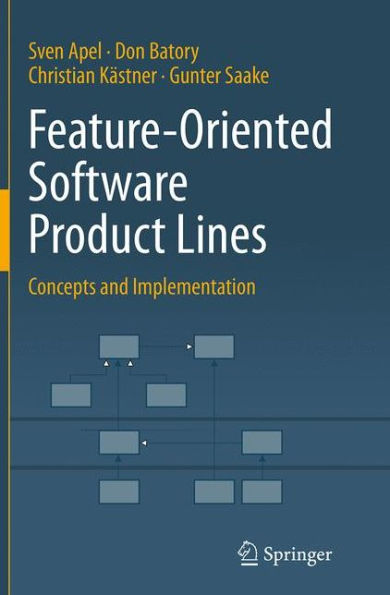The authors take a developer’s viewpoint, focus on the development, maintenance, and implementation of product-line variability, and especially concentrate on automated product derivation based on a user’s feature selection. The book consists of three parts. Part I provides a general introduction to feature-oriented software product lines, describing the product-line approach and introducing the product-line development process with its two elements of domain and application engineering. The pivotal part II covers a wide variety of implementation techniques including design patterns, frameworks, components, feature-oriented programming, and aspect-oriented programming, as well as tool-based approaches including preprocessors, build systems, version-control systems, and virtual separation of concerns. Finally, part III is devoted to advanced topics related to feature-oriented product lines like refactoring, feature interaction, and analysis tools specific to product lines. In addition, an appendix listsvarious helpful tools for software product-line development, along with a description of how they relate to the topics covered in this book.
To tie the book together, the authors use two running examples that are well documented in the product-line literature: data management for embedded systems, and variations of graph data structures. They start every chapter by explicitly stating the respective learning goals and finish it with a set of exercises; additional teaching material is also available online. All these features make the book ideally suited for teaching – both for academic classes and for professionals interested in self-study.
The authors take a developer’s viewpoint, focus on the development, maintenance, and implementation of product-line variability, and especially concentrate on automated product derivation based on a user’s feature selection. The book consists of three parts. Part I provides a general introduction to feature-oriented software product lines, describing the product-line approach and introducing the product-line development process with its two elements of domain and application engineering. The pivotal part II covers a wide variety of implementation techniques including design patterns, frameworks, components, feature-oriented programming, and aspect-oriented programming, as well as tool-based approaches including preprocessors, build systems, version-control systems, and virtual separation of concerns. Finally, part III is devoted to advanced topics related to feature-oriented product lines like refactoring, feature interaction, and analysis tools specific to product lines. In addition, an appendix listsvarious helpful tools for software product-line development, along with a description of how they relate to the topics covered in this book.
To tie the book together, the authors use two running examples that are well documented in the product-line literature: data management for embedded systems, and variations of graph data structures. They start every chapter by explicitly stating the respective learning goals and finish it with a set of exercises; additional teaching material is also available online. All these features make the book ideally suited for teaching – both for academic classes and for professionals interested in self-study.

Feature-Oriented Software Product Lines: Concepts and Implementation
315
Feature-Oriented Software Product Lines: Concepts and Implementation
315Paperback(Softcover reprint of the original 1st ed. 2013)

Product Details
| ISBN-13: | 9783662513002 |
|---|---|
| Publisher: | Springer Berlin Heidelberg |
| Publication date: | 08/23/2016 |
| Edition description: | Softcover reprint of the original 1st ed. 2013 |
| Pages: | 315 |
| Product dimensions: | 6.10(w) x 9.25(h) x 0.03(d) |
